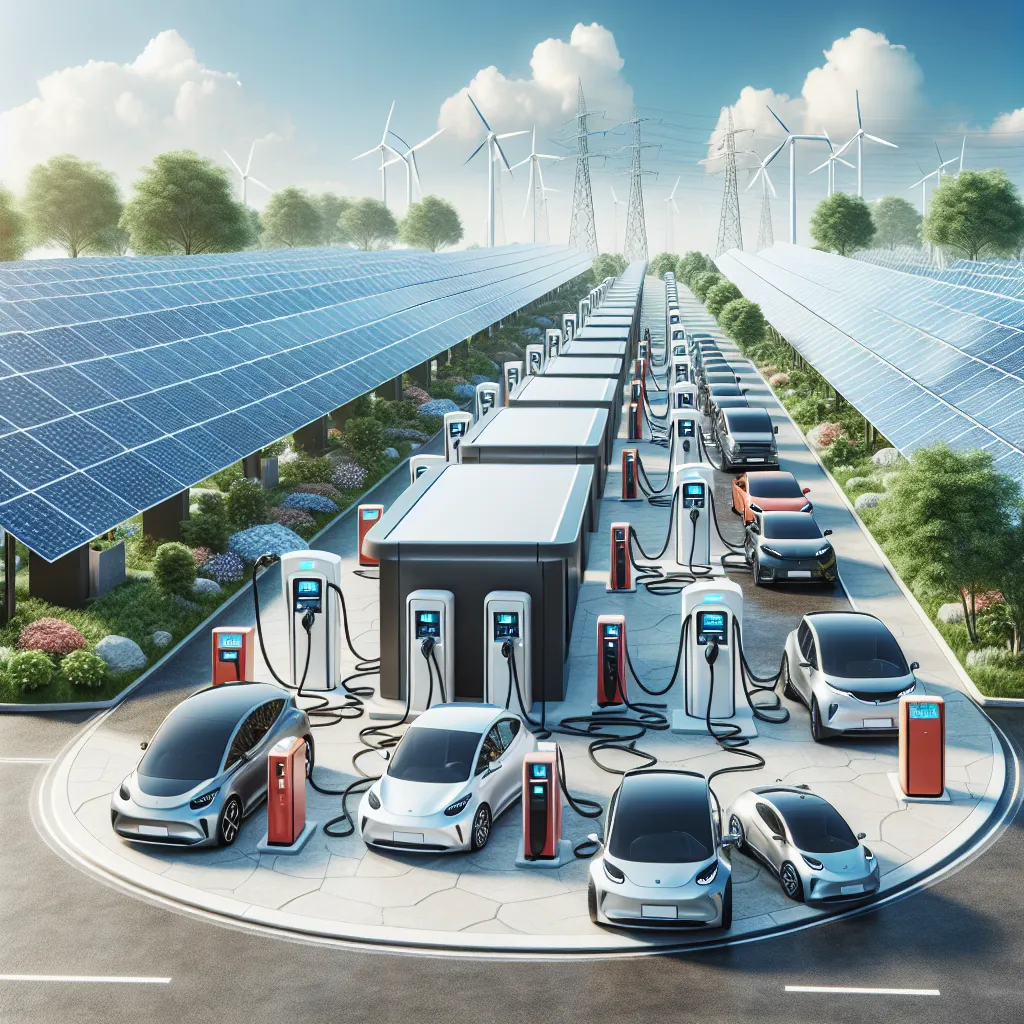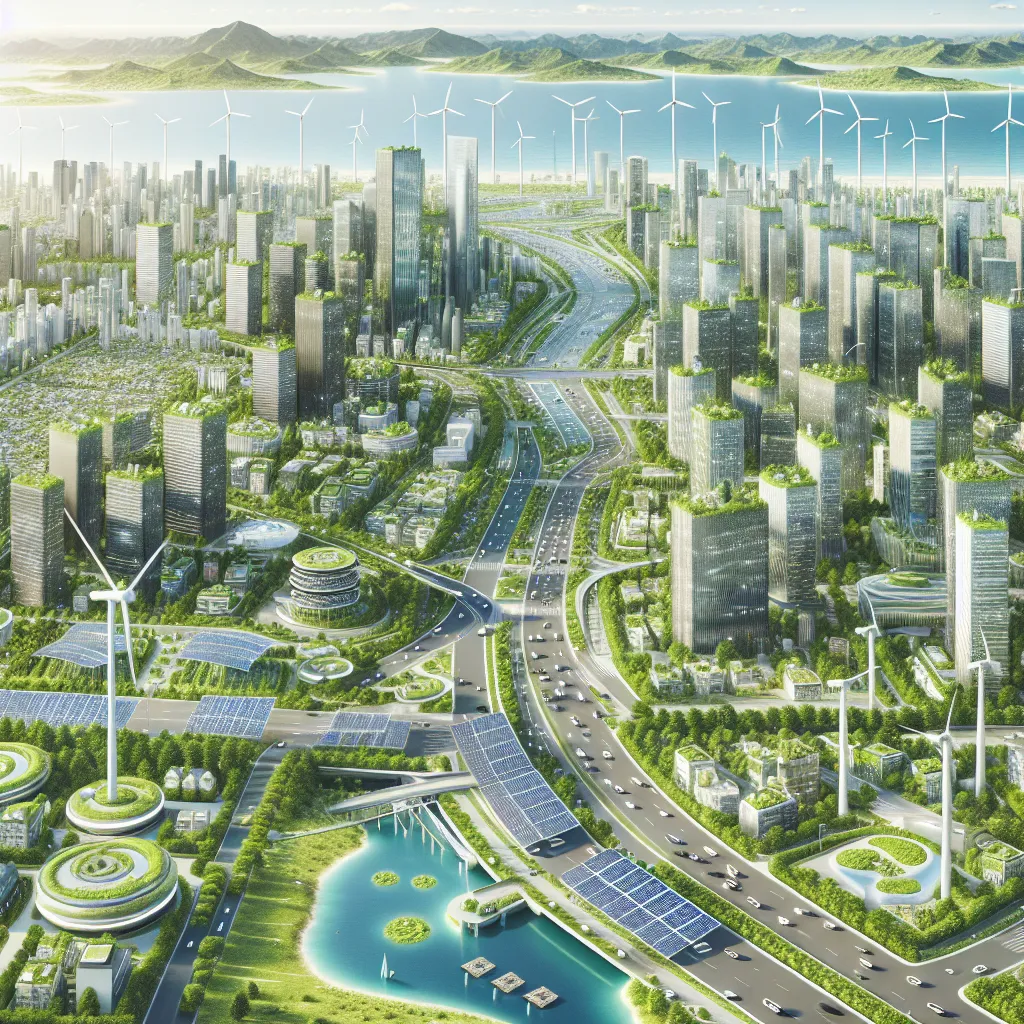Are you preparing for the IELTS Reading test? Look no further! In this comprehensive practice test, we’ll explore the fascinating topic of electric vehicles, their advantages, and the obstacles they face. This test is designed to mirror the real IELTS exam, featuring three passages of increasing difficulty and a variety of question types. Let’s dive in and enhance your reading skills while learning about this cutting-edge technology.
Nội dung bài viết
- Passage 1 (Easy Text): The Rise of Electric Vehicles
- Questions 1-5
- Questions 6-10
- Passage 2 (Medium Text): Overcoming the Hurdles of Electric Vehicle Adoption
- Questions 11-14
- Questions 15-19
- Passage 3 (Hard Text): The Socioeconomic Implications of Electric Vehicle Proliferation
- Questions 20-24
- Questions 25-27
- Questions 28-30
- Answer Key
 Electric vehicles charging at a station
Electric vehicles charging at a station
Passage 1 (Easy Text): The Rise of Electric Vehicles
Electric vehicles (EVs) have gained significant popularity in recent years as a more environmentally friendly alternative to traditional gasoline-powered cars. These vehicles run on rechargeable batteries and produce zero direct emissions, making them an attractive option for environmentally conscious consumers and governments looking to reduce carbon footprints.
The history of electric vehicles dates back to the 19th century, but it wasn’t until the late 20th and early 21st centuries that they began to gain traction in the mainstream market. Advancements in battery technology, increasing concerns about climate change, and government incentives have all contributed to the resurgence of interest in electric vehicles.
One of the primary benefits of electric vehicles is their reduced environmental impact. By eliminating the need for fossil fuels, EVs help to decrease air pollution and greenhouse gas emissions. This is particularly important in urban areas where air quality is a significant concern. Additionally, electric vehicles are generally quieter than their gasoline counterparts, contributing to a reduction in noise pollution in cities.
Another advantage of electric vehicles is their lower operating costs. While the initial purchase price of an EV may be higher than a comparable gasoline-powered car, the cost of electricity is typically lower than gasoline, resulting in substantial savings over time. Electric vehicles also have fewer moving parts, which can lead to reduced maintenance costs and improved reliability.
However, electric vehicles are not without their challenges. One of the main concerns is the limited driving range of many EVs compared to traditional vehicles. This range anxiety can be a deterrent for some potential buyers, particularly those who frequently take long trips. Additionally, the availability of charging infrastructure varies widely depending on location, which can make it difficult for some EV owners to find convenient charging options.
Despite these challenges, the electric vehicle market continues to grow, with many major automakers investing heavily in EV technology. As battery technology improves and charging infrastructure expands, it is likely that electric vehicles will play an increasingly important role in the future of transportation.
Questions 1-5
Do the following statements agree with the information given in the passage? Write
TRUE if the statement agrees with the information
FALSE if the statement contradicts the information
NOT GIVEN if there is no information on this
- Electric vehicles produce no direct emissions while driving.
- The concept of electric vehicles is a recent invention from the 21st century.
- Electric vehicles are always cheaper to purchase than gasoline-powered cars.
- The limited driving range of electric vehicles is a concern for some potential buyers.
- All major automakers are now exclusively producing electric vehicles.
Questions 6-10
Complete the sentences below. Choose NO MORE THAN TWO WORDS from the passage for each answer.
- Electric vehicles run on ____ that can be recharged.
- The renewed interest in electric vehicles is partly due to concerns about ____.
- Electric vehicles contribute to a reduction in ____ pollution in cities due to their quieter operation.
- The fewer moving parts in electric vehicles can lead to lower ____ costs.
- The ____ of charging stations can be a challenge for some electric vehicle owners.
Passage 2 (Medium Text): Overcoming the Hurdles of Electric Vehicle Adoption
While electric vehicles (EVs) offer numerous benefits, their widespread adoption faces several significant challenges. These obstacles range from technological limitations to infrastructural inadequacies and societal perceptions. Understanding and addressing these challenges is crucial for the continued growth and success of the electric vehicle market.
One of the primary hurdles in EV adoption is the issue of battery technology. Despite significant advancements, current batteries still face limitations in terms of energy density, charging speed, and longevity. The energy density of EV batteries, while improving, still lags behind that of fossil fuels, resulting in lower driving ranges compared to conventional vehicles. This limitation is particularly problematic for long-distance travel and can contribute to range anxiety among potential EV buyers.
Moreover, the charging time for EVs remains a concern. While fast-charging technologies have made significant strides, fully charging an electric vehicle still takes considerably longer than refueling a gasoline-powered car. This discrepancy can be a major inconvenience for users, especially during long trips or in emergency situations. The development of ultra-fast charging technologies and the improvement of battery chemistry are ongoing areas of research aimed at addressing this issue.
Another significant challenge is the need for a robust and widespread charging infrastructure. While the number of charging stations has been increasing, their distribution remains uneven, with rural and less populated areas often underserved. This disparity can make EV ownership impractical for residents of these areas and can discourage long-distance travel in electric vehicles. Furthermore, the variety of charging standards and payment systems can lead to confusion and inconvenience for EV users.
The environmental impact of electric vehicles, while generally positive, is not without complexities. While EVs produce zero direct emissions during operation, the production of their batteries and the source of electricity used for charging can have significant environmental implications. The mining of rare earth metals for batteries and the use of fossil fuels for electricity generation in some regions can offset some of the environmental benefits of EVs. Addressing these issues requires a holistic approach, including the development of more sustainable battery technologies and the transition to cleaner sources of electricity.
Cost remains a significant barrier to EV adoption for many consumers. Although the total cost of ownership for EVs can be lower than that of conventional vehicles in the long term, the higher upfront costs can be prohibitive. Government incentives and subsidies have played a crucial role in making EVs more affordable, but the sustainability of these programs and their impact on market dynamics are subjects of ongoing debate.
Lastly, public perception and awareness present challenges to EV adoption. Misconceptions about the performance, reliability, and practicality of electric vehicles persist among some consumers. Overcoming these perceptions requires ongoing education and outreach efforts, as well as improvements in EV technology and infrastructure to address legitimate concerns.
Despite these challenges, the electric vehicle market continues to grow, driven by technological advancements, increasing environmental awareness, and supportive policies. As these hurdles are gradually overcome, electric vehicles are poised to play an increasingly important role in the future of transportation, contributing to a more sustainable and environmentally friendly mobility ecosystem.
Questions 11-14
Choose the correct letter, A, B, C, or D.
-
According to the passage, which of the following is NOT mentioned as a limitation of current EV batteries?
A) Energy density
B) Charging speed
C) Weight
D) Longevity -
The term “range anxiety” refers to:
A) The fear of running out of battery power during a trip
B) The stress of finding a charging station
C) The worry about the environmental impact of EVs
D) The concern over the cost of electric vehicles -
Which of the following is described as an ongoing area of research for improving EV charging?
A) Increasing the number of charging stations
B) Standardizing charging connectors
C) Developing ultra-fast charging technologies
D) Reducing the cost of charging infrastructure -
The passage suggests that the environmental benefits of EVs can be offset by:
A) The noise pollution they produce
B) The mining of rare earth metals for batteries
C) The increased electricity consumption in cities
D) The disposal of old gasoline-powered vehicles
Questions 15-19
Complete the summary below. Choose NO MORE THAN TWO WORDS from the passage for each answer.
The adoption of electric vehicles faces several challenges. One major issue is battery technology, which still has limitations in terms of (15) ____ and charging speed. The need for a widespread (16) ____ is another significant hurdle, particularly in rural areas. The environmental impact of EVs is complex, with concerns about the (17) ____ used in battery production. The (18) ____ of EVs remains a barrier for many consumers, despite potential long-term savings. Lastly, public (19) ____ and awareness about EVs need to be addressed through education and technological improvements.
Passage 3 (Hard Text): The Socioeconomic Implications of Electric Vehicle Proliferation
The rapid proliferation of electric vehicles (EVs) is not merely a technological shift; it represents a profound transformation with far-reaching socioeconomic implications. This transition from conventional internal combustion engines to electric powertrains is poised to reshape industries, alter labor markets, and redefine the relationship between energy production and transportation. Understanding these multifaceted impacts is crucial for policymakers, industry leaders, and society at large as we navigate this paradigm shift in mobility.
One of the most significant socioeconomic impacts of EV adoption is its potential to disrupt the automotive industry and its associated supply chains. Traditional automakers are compelled to pivot their strategies and invest heavily in electric vehicle technology to remain competitive. This shift necessitates substantial changes in manufacturing processes, workforce skills, and supply chain management. The transition may lead to job losses in sectors related to internal combustion engine production, while simultaneously creating new opportunities in EV-related fields such as battery technology, electric motor production, and charging infrastructure development.
The implications for the labor market are profound and multifaceted. While there is potential for job creation in emerging EV-related sectors, there is also a risk of job displacement in traditional automotive manufacturing and maintenance. The skills required for EV production and maintenance differ significantly from those needed for conventional vehicles, necessitating large-scale retraining and education initiatives. Furthermore, the reduced maintenance requirements of EVs could lead to a contraction in the automotive repair industry, affecting a significant number of skilled workers.
The energy sector stands to undergo a dramatic transformation as EVs gain prominence. The shift from gasoline to electricity as the primary fuel for transportation will necessitate significant investments in power generation, transmission, and distribution infrastructure. This transition presents both challenges and opportunities for utility companies and energy providers. On one hand, increased electricity demand could strain existing grid infrastructure, requiring substantial upgrades. On the other hand, it opens up new revenue streams and opportunities for innovation in smart grid technologies and renewable energy integration.
The proliferation of EVs also has significant implications for urban planning and infrastructure development. Cities will need to adapt to accommodate widespread charging infrastructure, potentially altering urban landscapes and real estate values. The reduced noise and air pollution from EVs could make urban areas more livable, potentially influencing housing patterns and urban development strategies. Moreover, the integration of EVs into smart city initiatives could lead to more efficient and sustainable urban transportation systems.
From an economic perspective, the transition to EVs could have far-reaching effects on global trade patterns and geopolitical relationships. Countries that are currently major oil producers may see their economic and political influence wane, while nations with significant reserves of lithium, cobalt, and other materials crucial for battery production could gain prominence. This shift could potentially alter global power dynamics and trade relationships, necessitating new diplomatic and economic strategies.
The environmental benefits of EVs, while significant, also present complex economic considerations. While the reduction in carbon emissions and air pollution could lead to substantial public health savings and improved quality of life, it may also result in decreased revenue from fuel taxes, which many governments rely on for infrastructure funding. This shortfall could necessitate new taxation models or alternative funding mechanisms for road maintenance and transportation infrastructure.
Consumer behavior and social norms are also likely to evolve with increased EV adoption. The way people think about car ownership, long-distance travel, and energy consumption may shift dramatically. This could have cascading effects on various industries, from hospitality and tourism to retail and urban planning.
The transition to electric vehicles represents a complex and multifaceted socioeconomic transformation. While it offers numerous potential benefits in terms of environmental sustainability and technological innovation, it also presents significant challenges that need to be carefully managed. Policymakers, industry leaders, and society as a whole must work collaboratively to navigate this transition, ensuring that the benefits are maximized and the potential negative impacts are mitigated. As we move forward, it is clear that the proliferation of electric vehicles will not just change how we drive, but will fundamentally reshape our economic structures, urban environments, and social norms.
Questions 20-24
Choose the correct letter, A, B, C, or D.
-
According to the passage, what is one of the most significant socioeconomic impacts of EV adoption?
A) Increase in oil prices
B) Disruption of the automotive industry
C) Reduction in public transportation use
D) Growth of the mining industry -
What does the passage suggest about the labor market in relation to EV proliferation?
A) It will remain largely unchanged
B) There will only be job losses with no new opportunities
C) New jobs will completely offset any job losses
D) There will be both job creation and potential displacement -
How might the energy sector be affected by the increase in EV use?
A) It will see a decrease in overall energy demand
B) It will require significant infrastructure investments
C) It will lead to the immediate obsolescence of fossil fuels
D) It will result in lower electricity prices for consumers -
What potential impact on urban areas is mentioned in the passage?
A) Increased traffic congestion
B) Higher levels of air pollution
C) Changes in urban landscapes due to charging infrastructure
D) Decrease in public transportation options -
According to the passage, how might global trade patterns be affected by the transition to EVs?
A) Oil-producing countries will increase their economic influence
B) There will be no significant change in global trade relationships
C) Countries with reserves of battery materials could gain prominence
D) All international trade will be dominated by EV manufacturers
Questions 25-27
Complete the sentences below. Choose NO MORE THAN TWO WORDS from the passage for each answer.
- The transition to EVs may lead to a contraction in the ____ industry due to reduced maintenance requirements.
- The integration of EVs into ____ initiatives could result in more efficient urban transportation systems.
- The environmental benefits of EVs could lead to public health savings but may decrease revenue from ____.
Questions 28-30
Do the following statements agree with the claims of the writer in the passage? Choose
YES if the statement agrees with the claims of the writer
NO if the statement contradicts the claims of the writer
NOT GIVEN if it is impossible to say what the writer thinks about this
- The transition to electric vehicles will only have positive effects on the global economy.
- Policymakers and industry leaders need to work together to manage the challenges of EV adoption.
- Electric vehicles will completely replace all forms of public transportation in urban areas.
Answer Key
Passage 1:
- TRUE
- FALSE
- FALSE
- TRUE
- NOT GIVEN
- rechargeable batteries
- climate change
- noise
- maintenance
- availability
Passage 2:
11. C
12. A
13. C
14. B
15. energy density
16. charging infrastructure
17. rare earth metals
18. cost
19. perception
Passage 3:
20. B
21. D
22. B
23. C
24. C
25. automotive repair
26. smart city
27. fuel taxes
28. NO
29. YES
30. NOT GIVEN
The IELTS Reading test plays a crucial role in assessing your English language proficiency. By practicing with passages like these, which explore complex topics such as the benefits and challenges of electric vehicles, you can improve your reading comprehension skills and familiarize yourself with various question types. Remember to manage your time effectively during the actual test and always refer back to the passage to support your answers.
For more practice and tips on improving your IELTS Reading skills, check out our articles on how electric vehicles are reducing traffic congestion and the future of electric vehicles in reducing emissions. Additionally, you might find our piece on the rise of electric bikes in urban transportation interesting for a broader perspective on electric mobility.
Keep practicing, and good luck with your IELTS preparation!


